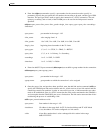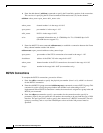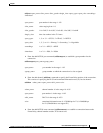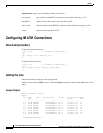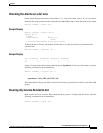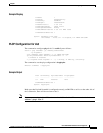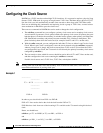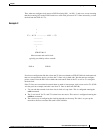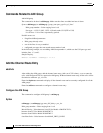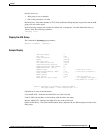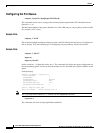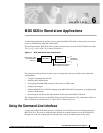
5-19
Cisco MGX 8220 Installation and Configuration
Release 5.0, Part Number 78-6430-03 Rev. D0, November 2003
Chapter
Configuring the Clock Source
Thus, when we configure clock source at END B as being DS1_1 or DS1_2, and so on, we are assuming
that the incoming DS1 to the END B card has a valid clock present on its T1 lines inserted by a clock
derived from the END A’s T3).
Example 2
|
|
T3 --- N* T1 --------------- N*T1 ---- T3
---------------
---------------
---------------
|
|
STRATUM 1/2
More accurate and useful clock-
typically provided by teleco. network.
END A END B
If we have a configuration like this, where the T1 lines are retimed to a STRATUM clock in the network,
then we are expected to derive sync from the T1 lines only at both ends. We then need to configure
pri/sec sources from the DS1 lines at both ends and control Xmit of the T3 as well as T1s using this
derived clock.
If the T1 lines are not retimed in network then we need to insert proper clock at one end on T1s (END
A in the previous example) and take it out from T1 lines at other end (END B).
1. T1s can take the transmit clock from Local clock or Loop clock. This is configured entering the
cnfln command.
2. The “Local clock” for T1s and T3 is taken from one source. This source is configured entering the
cnfclksrc command.
3. The correct way of configuring the clocking depends on the setup. The idea is to sync up the
network to the most accurate and useful clock available.



